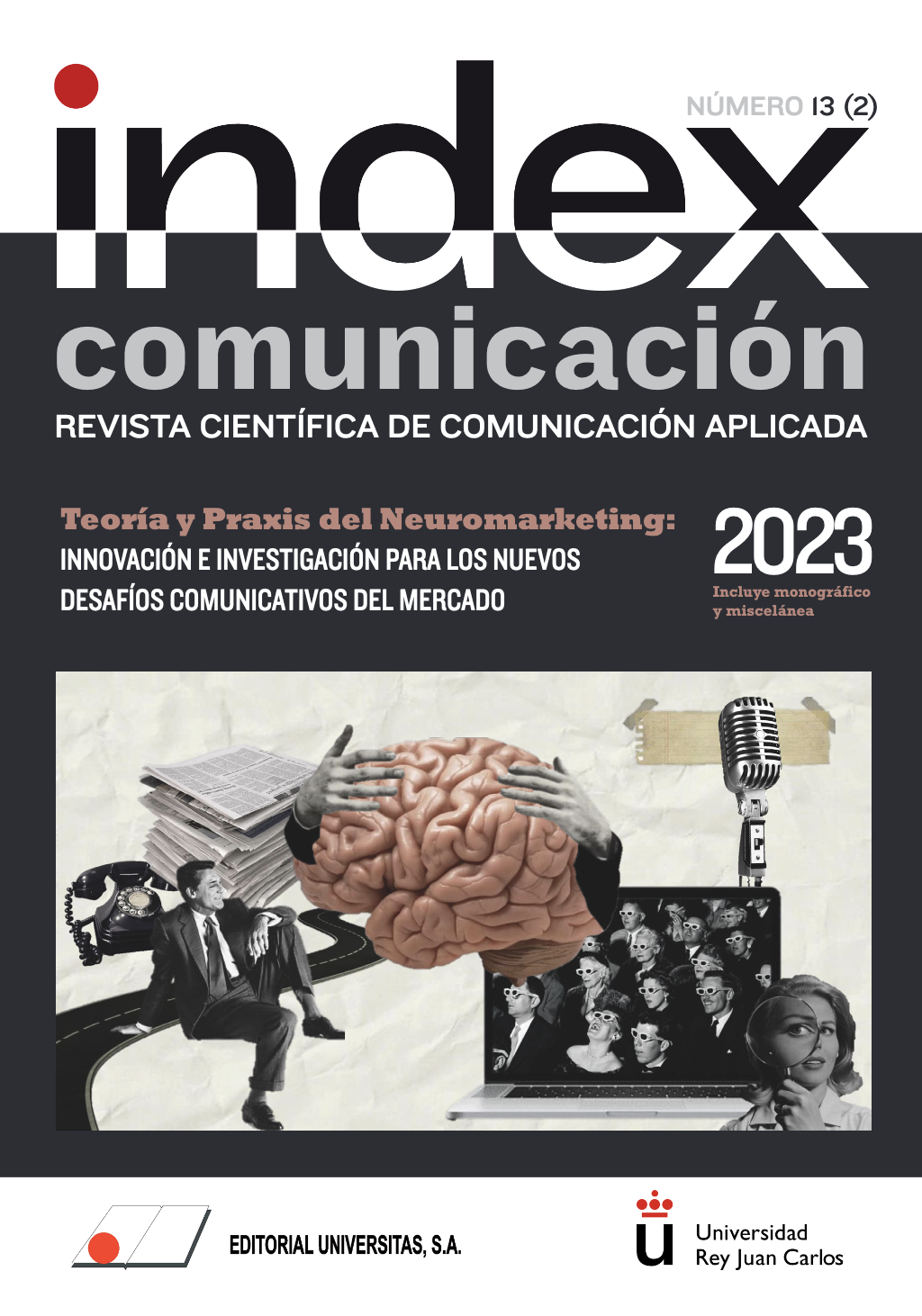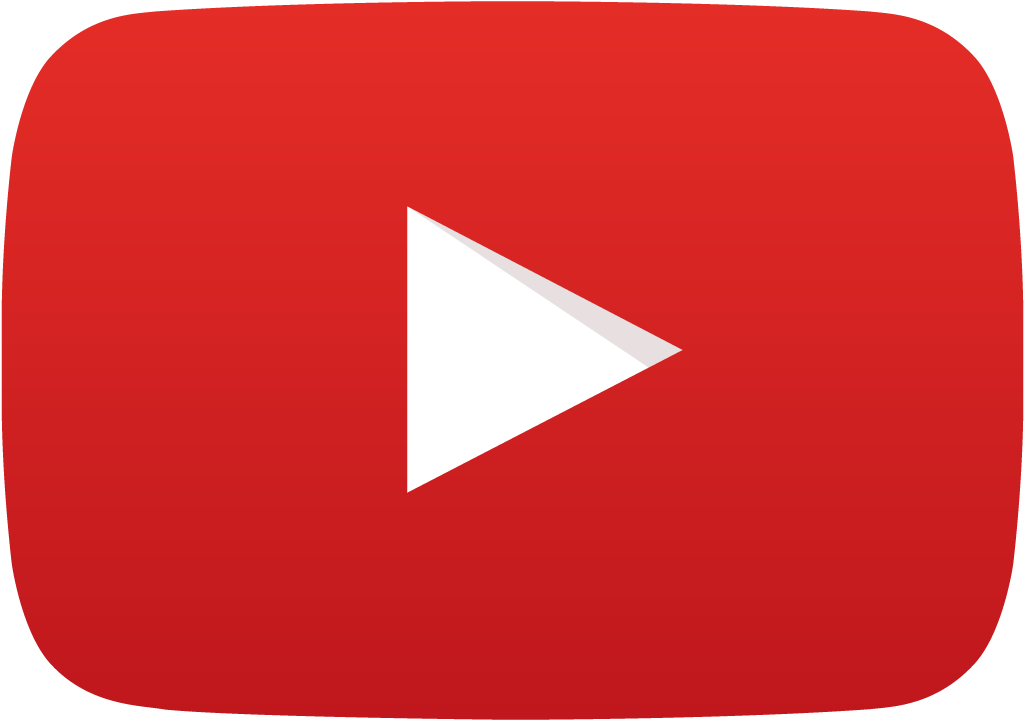La aplicabilidad del neuromarketing en la publicidad del sector lujo. Situación actual, potencial de crecimiento y limitaciones
DOI:
https://doi.org/10.33732/ixc/13/02LaapliPalabras clave:
neuromarketing, publicidad, lujo, marketing, eficiencia , publicitariaResumen
La importancia del consumidor en la publicidad actual ha obligado a las marcas de lujo a adaptar sus anuncios para hacerlos más personalizados a fin de llegar de forma eficiente al público objetivo. Sin embargo, esta individualización exige un conocimiento de la audiencia que las técnicas actuales de investigación no satisfacen. Esto enlaza con el neuromarketing, una disciplina que ha suscitado en los últimos años atención por su potencial para proporcionar una comprensión profunda del comportamiento y las preferencias de los consumidores. Este artículo proporciona un análisis exhaustivo de la aplicabilidad del neuromarketing en el ámbito de la publicidad a fin de valorar su potencial uso en el sector del lujo. Mediante una revisión exhaustiva de la bibliografía existente, se definen las áreas de la publicidad en las que el neuromarketing puede aportar un valor diferencial, se especifican las técnicas que hasta la fecha han resultado más eficientes en el ámbito publicitario y se analizan las posibles limitaciones de aplicabilidad. Este estudio ofrece una valiosa perspectiva sobre el potencial del neuromarketing como herramienta para comprender el comportamiento del consumidor y mejorar la eficacia de la publicidad en sectores altamente competitivos como el del lujo.
Métricas
Citas
AMINIROSHAN, Z., AZIMZADEH, S. M., TALEBPOUR, M. y GHOSHUNI, M. (2021). The effect of sport events environments on audience attention to advertising using brain activity. Annals of Applied Sport Science, 9(1), 1-9. doi.org/10.29252/aassjournal.815
BAIN & COMPANY (15 de noviembre de 2022). Global luxury goods market takes 2022 leap forward and remains poised for further growth despite economic turbulence. Bain & Company. https://bit.ly/3HU56sM
BARAYBAR-FERNÁNDEZ, A., BAÑOS-GONZÁLEZ, M., BARQUERO-PÉREZ, O., GOYA-ESTEBAN, R. y DE-LA-MORENA-GÓMEZ, A. (2017). Evaluation of emotional responses to television advertising through neuromarketing. Comunicar, 25(52), 19-28. doi.org/10.3916/C52-2017-02
BATRA, R. y AHTOLA, O.T. (1991). Measuring the hedonic and utilitarian sources of consumer attitudes. Marketing Letters, 2(2), 159-170.
BATRA, R. y RAY, M. L. (1986). Affective responses mediating acceptance of advertising. Journal of Consumer Research, 13(2), 234-249. doi.org/10.1086/209063
BOELL, S. y CECEZ-KECMANOVIC, D. (2015). On being ‘Systematic’ in Literature Reviews in IS. Journal of Information Technology, 30(2). doi.org/10.1057/jit.2014.26
BOELL, S. K. y CECEZ-KECMANOVIC, D. (2014). A Hermeneutic Approach for Conducting Literature Reviews and Literature Searches. Communications of the Association for Information Systems, 34, 257-286.
BOSCOLO, J. C., OLIVEIRA, J. H. C., MAHESHWARI, V. y GIRALDI, J. M. E. (2021). Gender differences: Visual attention and attitude toward advertisements. Marketing Intelligence and Planning, 39(2), 300-314. doi.org/10.1108/MIP-11-2019-0598
CARTOCCI, G., CARATÙ, M., MODICA, E., MAGLIONE, A. G., ROSSI, D., CHERUBINO, P. y BABILONI, F. (2017). Electroencephalographic, heart rate, and galvanic skin response assessment for an advertising perception study: Application to antismoking public service announcements. Journal of Visualized Experiments, 2017(126). doi.org/10.3791/55872
COFFEE, P. (2022). Luxury Brands Spend More on Marketing, Defying Economic Uncertainty. The Wall Street Journal. https://on.wsj.com/3I5mXge
DONTHU, N., KUMAR, S., MUKHERJEE, D., PANDEY, N. y LIM, W. M. (2021). How to conduct a bibliometric analysis: An overview and guidelines. Journal of Business Research, vol. 133(C), 285-296. doi.org/10.1016/j.jbusres.2021.04.070
EIJLERS, E., BOKSEM, M. A. S. y SMIDTS, A. (2020). Measuring neural arousal for advertisements and its relationship with advertising success. Frontiers in Neuroscience, 14. doi.org/10.3389/fnins.2020.00736
FETSCHERIN, M. y HEINRICH, D. (2015). Consumer-Brand Relationship Research: A Bibliometric Citation Meta-Analysis. Journal of Business Research, 68(2), 380-390. doi.org/10.1016/j.jbusres.2014.06.010
FETSCHERIN, M., GUZMAN, F., VELOUTSOU, C. y ROSEIRA CAYOLLA, R. (2019). Latest research on brand relationships: introduction to the special issue. Journal of Product & Brand Management, 28(2), 133-139.
doi.org/10.1108/JPBM-12-2018-2167
FLORES, C. O. G., NINA, D. A., ULCUANJO, O. M. R. y VINUEZA, D. F. F. (2022). Psychosensometric study (eye tracker) on the levels of persuasion in the women's perfumery industry. Journal of Pharmaceutical Negative Results, 13(4), 562-572. doi.org/10.47750/pnr.2022.13.04.074
GARCIA, J. R. y SAAD, G. (2008). Evolutionary neuromarketing: darwinizing the neuroimaging paradigm for consumer behavior. Journal of Consumer Behaviour, 7(4-5), 397-414. doi.org/10.1002/cb.259
GOLNAR-NIK, P., FARASHI, S. y SAFARI, M.-S. (2019). The application of EEG power for the prediction and interpretation of consumer decision-making: A neuromarketing study. Physiology and Behavior, 207, 90-98. doi.org/10.1016/j.physbeh.2019.04.025
HAMELIN, N., MOUJAHID, O. E. y THAICHON, P. (2017). Emotion and advertising effectiveness: A novel facial expression analysis approach. Journal of Retailing and Consumer Services, 36, 103-111. doi.org/10.1016/j.jretconser.2017.01.001
HAMELIN, N., THAICHON, P., ABRAHAM, C., DRIVER, N., LIPSCOMBE, J., NAIK, M. y PILLAI, J. (2020). Storytelling, the scale of persuasion and retention: A neuromarketing approach. Journal of Retailing and Consumer Services, 55. doi.org/10.1016/j.jretconser.2020.102099
HENRICH, J., HEINE, S. J. y CNOREZAYAN, A. (2010). The weirdest people in the world? Behavioral and Brain Sciences, 33, 61-135. doi.org/10.1017/S0140525X0999152X
HOLBROOK, M. B. y HIRSCHMAN, E. C. (1982). The experiential aspects of consumption: consumer fantasies, feelings, and fun. Journal of Consumer Research, 9(2), 132-140. doi.org/10.1086/208906
HSU, M. (2017). Neuromarketing: Inside the Mind of the Consumer. California Management Review, 59(4), 5-22. doi.org/10.1177/0008125617720208
JUNG, Y. S., KIM, Y.-T., BAECK, J.-S., LEE, J., KIM, J. G. y CHANG, Y. (2018). The neural correlates of celebrity power on product favorableness: an fMRI study. NeuroQuantology, 16(2), 50-58. doi.org/10.14704/nq.2018.16.2.1092
KAPFERER, J. N. y BASTIEN, V. (2009). The Luxury Strategy: Break the Rules of Marketing to Build Luxury Brands. Kogan Page Publishers.
KAPFERER, J.-N. (2012). The New Strategic Brand Management: Advanced Insights and Strategic Thinking. Kogan Page Publishers.
KITCHENHAM, B. y CHARTERS, S. (2007). Guidelines for Performing Systematic Literature Reviews in Software Engineering. Technical Report EBSE 2007-001, Keele University and Durham University Joint Report.
LEE, E.-J., KWON, G., SHIN, H. J., YANG, S., LEE, S. y SUH, M. (2014). The spell of green: Can frontal EEG activations identify green consumers? Journal of Business Ethics, 122(3), 511-521. doi.org/10.1007/s10551-013-1775-2
LEE, N., BRODERICK, A. J. y CHAMBERLAIN, L. (2007). What Is “Neuromarketing”?
A Discussion and Agenda for Future Research. International Journal of Psychophysiology, 63(2), 199-204. doi.org/10.1016/j.ijpsycho.2006.03.007
MARTÍNEZ-SÁEZ, J. (2004). Branded content o advertainment: ¿Un nuevo escenario para la publicidad audiovisual? En MÍNGUEZ ARRANZ, N. y VILLAGRA GARCÍA, N. (eds.), La Comunicación. Nuevos Discursos y Perspectivas,
pp. 57-62. Edipo.
MISSAGLIA, A. L., OPPO, A., MAURI, M., GHIRINGHELLI, B., CICERI, A. y RUSSO, V. (2017). The impact of emotions on recall: An empirical study on social ads. Journal of Consumer Behaviour, 16(5), 424-433. doi.org/10.1002/cb.1642
MUÑOZ-LEIVA, F., HERNÁNDEZ-MÉNDEZ, J. y GÓMEZ-CARMONA, D. (2019). Measuring advertising effectiveness in travel 2.0 websites through eye-tracking technology. Physiology and Behavior, 200, 83-95. doi.org/10.1016/j.physbeh.2018.03.002
NUENO, J. L. y QUELCH, J. A. (1998). The mass marketing of luxury. Business Horizons, 41(6), 61-68. doi.org/10.1016/S0007-6813(98)90023-4
OHME, R., REYKOWSKA, D., WIENER, D. y CHOROMANSKA, A. (2009). Analysis of neurophysiological reactions to advertising stimuli by means of EEG and galvanic skin response measures. Journal of Neuroscience, Psychology and Economics, 2(1), 21-31. doi.org/10.1037/a0015462
OHME, R., REYKOWSKA, D., WIENER, D. y CHOROMANSKA, A. (2010). Application of frontal EEG asymmetry to advertising research. Journal of Economic Psychology, 31(5), 785-793. doi.org/10.1016/j.joep.2010.03.008
PAUL, J., LIM, W. M., O’CASS, A., HAO, A. W. y BRESCIANI, S. (2021). Scientific Procedures and Rationales for Systematic Literature Reviews (SPAR-4-SLR). International Journal of Consumer Studies, 45(4), 01-016.
PILELIENE, L. (2012). Marketing luxury: Neuroinsight. Management Theory and Studies for Rural Business and Infrastructure Development. Scientific Journal, 34(5), 148-153.
RAMOS-RODRÍGUEZ, A.-R. y RUÍZ-NAVARRO, J. (2004). Changes in the intellectual structure of strategic management research: A bibliometric study of the Strategic Management Journal, 1980-2000. Strategic Management Journal, 25(10), 981-1004.
RASUL, T. (2019). The trends, opportunities and challenges of halal tourism: A systematic literature review. Tourism Recreation Research, 44(4), 434-450.
RIES, A. y TROUT, J. (2003). Posicionamiento: la batalla por su mente. McGraw-Hill.
SANDS, S. (octubre 2009). Sample Size Analysis for Brainwave Collection (EEG). Methodologies. https://bit.ly/3zb3zJx
SHEN, W., BAI, H., YUAN, Y., BALL, L. y LU, F. (2022). Quantifying the Roles of Conscious and Unconscious Processing in Insight-Related Memory Effectiveness within Standard and Creative Advertising. Psychological Research, 86. doi.org/10.1007/s00426-021-01572-9
STATISTA (2022a). Luxury Goods. Statista. https://bit.ly/3xuGvWl
STATISTA (2022b). Advertising and promotion expenditure of the LVMH Group worldwide from 2008 to 2022. Statista. https://bit.ly/3I3wMLA
STATISTA (2022c). Luxury advertising spending in the United States from 2014 to 2019. Statista. https://bit.ly/3Kd5KnM
STATISTA (2022d). Advertising and promotion expenses of the Christian Dior group from 2017 to 2021. Statista. https://bit.ly/3XzaLtM
STATISTA (2022e). Advertising and marketing costs of Capri Holdings (formerly Michael Kors Holdings) from 2016 to 2022. Statista. https://bit.ly/3RXkZmM
STATISTA (2022f). Digital advertising spending of selected luxury brands in the United States between January 2020 to May 2021. Statista. https://bit.ly/3RY1Np1
WAJID, A., RAZIQ, M. M., AHMED, Q. M. y AHMAD, M. (2021). Observing viewers’ self-reported and neurophysiological responses to message appeal in social media advertisements. Journal of Retailing and Consumer Services, 59. doi.org/10.1016/j.jretconser.2020.102373
WANG, R. W. Y., CHANG, Y. y CHUANG, S. (2016). EEG spectral dynamics of video commercials: Impact of the narrative on the branding product preference. Scientific Reports, 6. doi.org/10.1038/srep36487
Publicado
Cómo citar
Número
Sección
Licencia
Derechos de autor 2023 Coral Cenizo (Autor/a)

Esta obra está bajo una licencia internacional Creative Commons Atribución-NoComercial 4.0.
Los autores que publican en esta revista están de acuerdo con los siguientes términos:
Los autores conservan los derechos de autor y garantizan a la revista el derecho de ser la primera publicación del trabajo al igual que licenciado bajo una Licencia Creative Commons Atribución-NoComercial 4.0 Internacional que permite a otros compartir el trabajo con un reconocimiento de la autoría del trabajo y la publicación inicial en esta revista, sin finalidad comercial.
Los autores pueden establecer por separado acuerdos adicionales para la distribución no exclusiva de la versión de la obra publicada en la revista (por ejemplo, situarlo en un repositorio institucional o publicarlo en un libro), con un reconocimiento de su publicación inicial en esta revista.
Se permite y se anima a los autores a difundir sus trabajos electrónicamente (por ejemplo, en repositorios institucionales o en su propio sitio web) antes y durante el proceso de envío, ya que puede dar lugar a intercambios productivos, así como a una citación más temprana y mayor de los trabajos publicados (Véase The Effect of Open Access) (en inglés).















